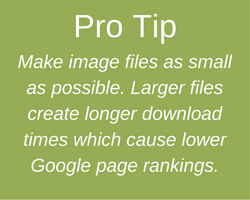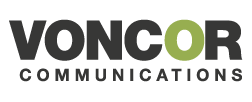 Your website is one of the most important marketing assets your company possesses. When a person is searching online for a product or service and comes across your website, you want to make sure you are putting your best face forward. Performing these website SEO best practices will help.
Your website is one of the most important marketing assets your company possesses. When a person is searching online for a product or service and comes across your website, you want to make sure you are putting your best face forward. Performing these website SEO best practices will help.
If your website hasn’t been updated in a while, there are steps you can take to improve the appearance and overall performance, which, in turn, will then help boost your rankings in Google search. And make a better connection with people visiting your site.
Before you begin tackling the look of your website, you should make sure that your website is:
Mobile Responsive: Does your site function the way it should across various types of devices? Are users able to navigate the site just as easily from a desktop as they can from a tablet or a phone? Having a mobile responsive web design is not only important for the user but if your site isn’t responsive, Google will penalize the site in the search results. If your site hasn’t been updated to reflect the new standard, you should make this a priority.
AMP enabled: AMP stands for Accelerated Mobile Pages. When a user views a site that is AMP-enabled on a mobile device, they  will only be served the most essential pages. In essence, the bloat is removed from the site so that load times are quicker, and the user experience is better. If you have a WordPress site, you can choose from several AMP plugins.
will only be served the most essential pages. In essence, the bloat is removed from the site so that load times are quicker, and the user experience is better. If you have a WordPress site, you can choose from several AMP plugins.
Accessible: As much as it is important to have a responsive and AMP enabled website, it is also important that the site be accessible for people who are visually impaired. One way to make the site more accessible is through the use of Alt Tags. An SEO fundamental, these are descriptions added to each image in the backend of a site so that users will know which images are on a given page or section. In addition, Google penalizes sites which don’t use Alt Tags by pushing them down in the search results.
Secure: Websites using the HTTPS prefix have been built with a Secure Socket Layer, meaning they are encrypted. In the past, Google felt it was only necessary to have a secure socket on e-commerce websites (sites that passed financial information), but because so many sites are being hacked these days, having a secure socket is becoming more important. What’s more, Google provides another SEO boost here – while only 1% of websites have SSL, 40% of those listed on the first page of search results are HTTPS.
Sharable: Tap into the viral power of Social Media by making sure the content on your website is readily shareable. This means including user-friendly share buttons so that content can be shared to sites like Facebook, LinkedIn, and Google+. It means having the content in a variety of formats (.pdf, video, audio) so users can share the type of content they prefer. Finally, take a variety of platforms into account when creating your content so that when it is shared, it looks the way you want it to look.
If all of the above website SEO practices are in good working order, then the next items on the agenda should be the look of the home page and a review of content on the remaining pages.
![]() The home page is where most visitors will land first, and if it looks dated, messy, or doesn’t have the information a person is looking for, then they will abandon ship. When updating content, be sure that it reflects the nature of the business, product, or service. Incorporating a blog feed above the fold can help with the appearance of fresh content.
The home page is where most visitors will land first, and if it looks dated, messy, or doesn’t have the information a person is looking for, then they will abandon ship. When updating content, be sure that it reflects the nature of the business, product, or service. Incorporating a blog feed above the fold can help with the appearance of fresh content.
For both the home page and internal pages, it is important to update the title tags and meta descriptions on the back end of the website. If those don’t closely match what is on the website, and the visitor comes to your site, the site could experience higher bounce rates.
All of these website SEO suggestions are just a handful of steps you can take to help make your existing website better. If implemented, not only will be user experience be improved but where the site ranks in the search results will too.
If you would like to talk about how we can help you with your website, drop us a line at (415) 717-7789, or send us an email.

Recent Comments